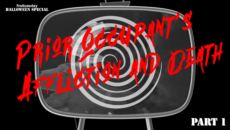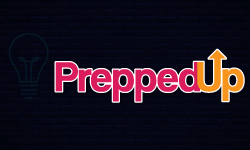Will the forthcoming Qualified Residential Mortgage (QRM) requirements affect future home sales volume?
- Yes. (93%, 75 Votes)
- No. (7%, 6 Votes)
Total Voters: 81
The Federal Housing Administration (FHA) reports its reserve fund is at -1.44% (or negative $16.3 billion), down from 0.24% in 2011. FHA will need a bailout for the first time in its history if its reserves are still negative in November 2013.
The FHA isn’t taking this lying down. Measures to take the FHA back into the black include:
- extending premium payments for new loans beyond the current ten-year maximum; and
- increasing annual insurance premiums on new loans by 0.1%.
It also plans to increase foreclosure efficiency and avoid costly foreclosures by:
- continuing to sell pools of defaulted mortgages to investors (at least 10,000 mortgages per quarter);
- allowing deeper levels of payment relief for distressed homeowners; and
- allowing more short sales.
The 2012 reserve requirement set by Congress is 2%. Reserves dipped into the negative due to:
- a lower home price appreciation than forecast;
- declining interest rates, meaning more creditworthy homeowners have refinanced into non-FHA mortgages, paying off their FHA mortgages; and
- high losses on loans originated from 2007-2009, the recession years.
first tuesday insight
The bailout is more than just likely. The FHA is the kingpin that currently holds the entire housing market together. It is indeed too big to fail, necessary for around one-third of California’s monthly home sales.
The qualified residential mortgage (QRM) guidelines, set to take effect in early 2013, require a 20% down payment. (FHA-insured mortgages are not subject to QRM guidelines.)
Currently, more than half of the current homebuyer population puts down less than 20% when purchasing a home. With a 20% QRM restriction, these low down payment buyers will have two options:
- pay the increased interest rates on a non-QRM loan AND purchase expensive private mortgage insurance; or
- take out a Federal Housing Administration (FHA)-insured loan.
Most borrowers will opt for the FHA-insured loan.
With the personal savings rate now below 4%, very few homebuyers will be able to produce a 20% down payment within the next 10 to 15 years. The QRM will create a more stable housing market in the long run, but homebuyers need time to adjust to the new (well, old) norm of a 20% down payment. Thus, the FHA’s rising dominance as the low down payment option is necessary to keep deals churning.
Related article:
But personal savings are low partly because of the low down payment requirements of FHA-insured mortgages. Not only is low savings bad for stable homeownership, it’s bad for stable household balance sheets.
So, the FHA’s got a delicate juggling act ahead of it. On one hand, it must keep deals moving forward, and balance future QRM requirements. On the other, it must eventually wean homebuyers off the low down payment option so the QRM can stabilize the market.
And up in the air? Its own solvency.
Re: FHA issues annual financial status report to Congress from the U.S. Department of Housing and Urban Development, FHA projected to exhaust reserves, could need bailout from the Los Angeles Times and FHA running out of money from the Washington Post




















If the best way to determine what is happening and why is to FOLLOW THE MONEY, then it would seem that the new regs are simply a further turn of the screw in the transfer of wealth from the 99% to the 1% .
As it becomes harder and harder for the 99% to own the most basic asset, real property, obviously less and less will do so. However, these assets don’t disappear, they just get owned by SOMEONE ELSE. Subtracting the 99% from 100% only leaves the 1% who are represented by their corporate and government proxies.
Obviously, increasing the cash requirement and cost of borrowing (increased mortgage insurance, etc.) prevents more of the 99% from owning real property. Additionally, it coincidentally reduces demand for these assets thereby allowing those unaffected by the requirements to scarf them up at reduced prices.
Even better, it coincidentally enlarges the RENTAL market which not only puts upward pressure on the entire rental market (owned more and more by guess who), but also immediately makes the scarfed up assets more profitable as present and FUTURE rentals.
Just imagine that the present trends continue: Actual home ownership becomes relatively rare, a special PERK or reward ONLY for those “qualified” (sorry, no self-employed) – for instance government and big business employee drones (who of course will always have to be careful of not losing their preferred status). While almost EVERYONE else is a tenant effectively subject to the WHIMS of a profit making entity in control of their housing. And of course, future landlords will have instant access to ALL the rental information provided by previous landlords, thereby making it effectively impossible for tenants to object to violations of their “rights” without being blacklisted (and thereby HOMELESS).
So, since this trend is ACCELERATING, in the not so distant future, not only will the 1% effectively own everything (except the 99%’s clothing), but troublemaking subversives can be easily nullified and destroyed by being made homeless.
Anyone up for pooling CASH to do some scarfing?
Little by little, it seems the government is trying to establish more conservative loan procedures, like the traditional 20% down comeback. BUT, in actuality, the banks still offer adjustable rate mortgages and loans with less than 20% down, SO the return of the same debacle that was witnessed in 2006-2009 could return, but this time with a greater vengeance.
Many persons given mortgage adjustments end up even not paying on those redone mortgages! What does that tell you?
On the other hand, people themselves are realizing some hard lessons. If even banks offer ARMs they may not take them (if they can even qualify).
The abysmally low savings rate in America does not bode well for family security in general, let alone for mortgage security. A people that spend more than they earn are in for some very hard lessons. Years of easy credit (promoted by the government in cohorts with the banks by the way) spoiled people and allowed them to live beyond their means—-in some cases WAY beyond.
Once, while getting a battery change at Sears in Torrance, we chatted with a lady driving a brand new top of the line Cadillac. During the conversation she admitted she had to take out a loan when her refrigerator suddenly died, and she had to buy a replacement. The loan was $800. She drove a luxury car but did not have $800 for a frig.
Now, the pigeons will come home to roost. Many persons still live beyond their means due to years of easy credit habits and have not yet learned the lesson. But they will, if the job market tightens up again (if it ever really loosened up—-which we doubt).
And this time, there is NO personal bank to borrow from in the home equity slush fund. There often simply is no equity.
Once the lessons are learned and the foundation swept clean of all the rubble we can rebuild a stable nation again. And, that is GOOD NEWS! That will happen eventually—-but more lessons must be learned first.